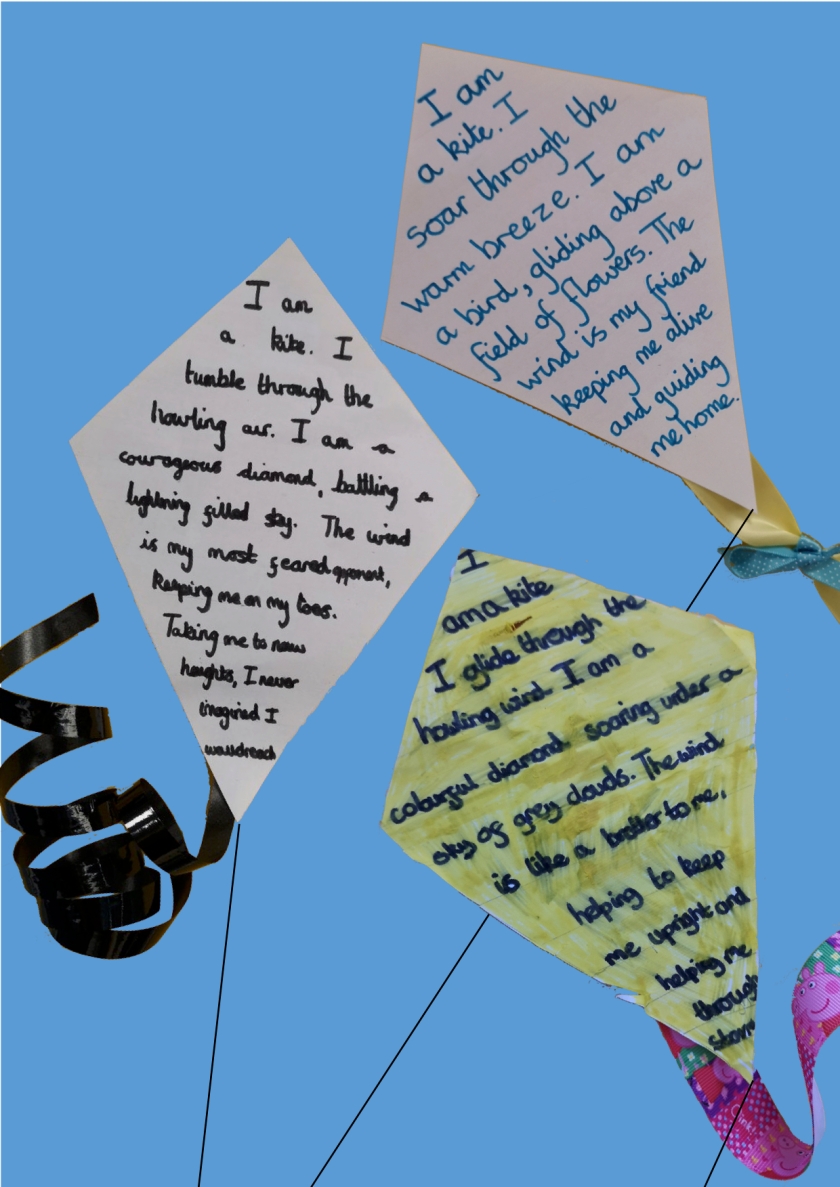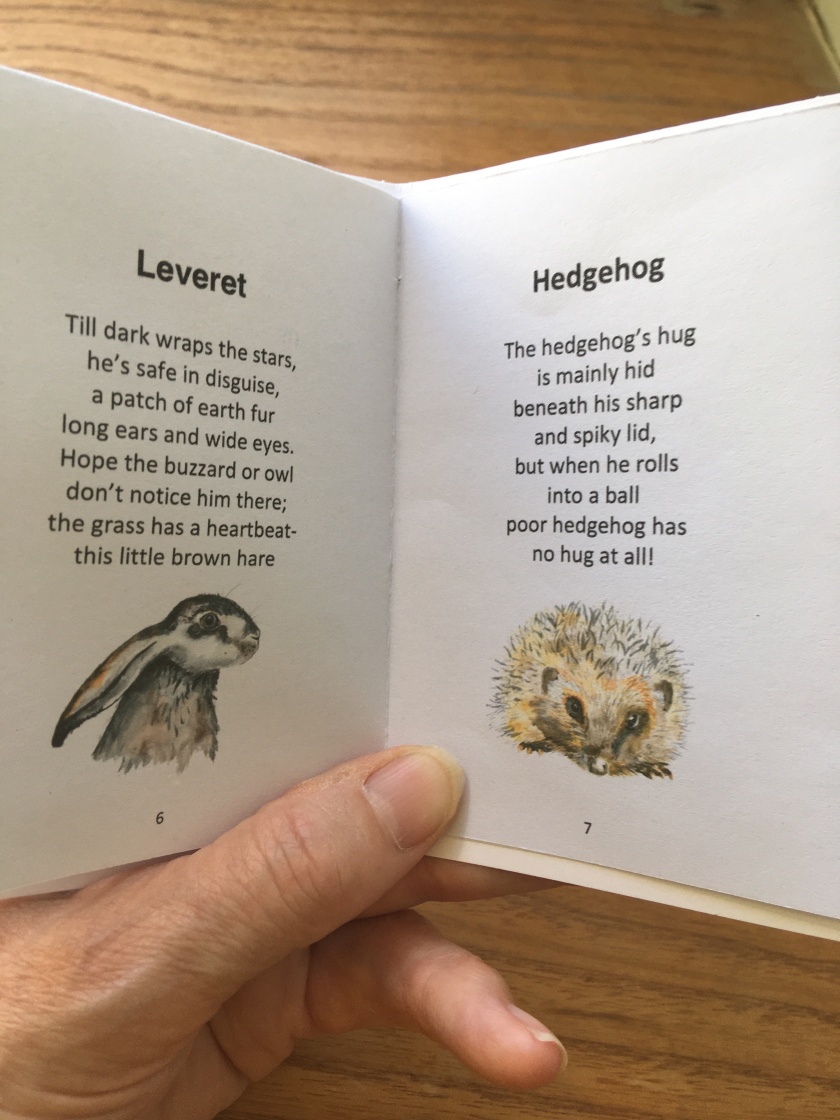Today I’m going to guide you to write a poem about the moon – this can be written out onto paper or a disc of card and hung up, or written onto a 3D moon to hang as a mobile!
This is a circular poem – the first line is the same as the last line, and on the mobile it IS the same line. If you write it correctly, it doesn’t matter where you start in the poem, it will still make sense.
Start every line with a capital letter. Do not use rhyme.
You will be writing your poem from what is known as ‘the first person’ perspective. That just means you are writing as if you ARE the moon. You only use words like ‘I’ and ‘My’ and ‘Me’. Your first line (and last line!) is:
Because I am the moon
Your second line starts ‘I am the colour’ – try and think of interesting, unusual, or surprising things that are the same colour as the moon. My second line is:
I am the colour of cobwebs and smoke
Your third line begins ‘My mountains’. This line will be a lie. The mountains will do something that mountains cannot really do. My third line is:
My mountains tell me stories
Your fourth line begins ‘My secrets can be found’. This line is also a lie. Try and think of the most wonderful, unusual, exciting, amazing place the moon’s secrets might be found. My fourth line is:
My secrets can be found in silver coins
Your fifth line starts ‘I wish’. What ambition might the moon have? Think about what might be exciting to you if you were the moon.
I wish I was a shooting star
Your sixth line begins ‘I’m sad’ – the moon might be lonely all on its own in space. It has no air, no water, no plants or animals. Because there is no air, there is no sound, because sound waves use air to travel though. Think about being the moon, and decide what you would miss the most. This is my sixth line:
I’m sad I cannot hear Earth’s songs
Your seventh line starts ‘I dream’. What would the moon dream about? Perhaps another of those things she does not possess? Maybe there is something she would like to do, or try, or someone/something she would like to meet? My seventh line is:
I dream of being kissed with clouds
Your eighth line begins with ‘My seas of dust hide’. What extraordinary thing might the moon’s dust hide? Creatures? Jewels? Words? Magic? Tunnels to another place? My eighth line is:
My seas of dust hide night time lullabies
The last line after this is ‘Because I am the moon’ – the same as the first line. BUT unless you are writing this poem out on a piece of paper, you will not write this onto your 3D shape – because it shares a place with the first line. You will see what I mean when you make your shape!
Here is my poem written out:
Because I am the moon
I am the colour of cobwebs and smoke
My mountains tell me stories
My secrets can be found in silver coins
I wish I was a shooting star
I’m sad I cannot hear your songs
I dream of being kissed with clouds
My seas of dust hide night time lullabies
Because I am the moon
Here is how to write your poem onto a moon!
First you need four pieces of A4 paper. Fold them all in half. Then, either use a pair of compasses to draw a circle or find a saucer or something round that is just smaller than the width of the folded paper to draw round.

Then cut the circle through the 4 layers. Or, if you are unsure of doing it this way, draw your circle onto each folded piece of paper and cut each folded piece out separately. You will end up with 8 paper circles. Fold them in half and open them up again.

Write one line of your poem on each of the circles. Remember, you only need one ‘Because I am the moon’.

If you want to illustrate your poem or colour in the circles, it is best done now – it becomes harder later! Then stack the circles with your poem in order, first line at the top- ‘Because I am the moon’.

Then take the top circle and fold it in half, so the right side folds onto the left side.

Glue this half.

Take the second circle with the second line of your poem on and stick the left hand side of this circle onto the other glued half circle. Make sure the fold matches the fold in the other circle. Be as accurate as you can.

Then fold this second circle in half and glue the side facing you.

And add the next circle on top – again, making sure the folds are all lined up.

Do this with all of the circles, until you have none left. Then turn the circles over so you have half of the first circle on your right and half the last circle on your left.

Take a long piece of hanging string, embroidery thread or wool and stick it in the crack in the middle of the half circles. Use sticky tape to keep it in place.

Then glue the left-hand circle side and stick it to the right-hand half circle. The shape is now 3D and will open up into your 3D moon poem.

Can you see that now the first and last line of your poem is ‘Because I am the Moon’? In fact, because of the way it is written, any line can be the first line, so it doesn’t matter if the moon is not facing the right way when you begin to read it. It still makes sense. You are ready to hang up your moon poem!


































 The easiest way to make sure it will fit this space is to cut a piece of paper that big and draw what you want to pop up on it – making it as big as possible.
The easiest way to make sure it will fit this space is to cut a piece of paper that big and draw what you want to pop up on it – making it as big as possible.






























 Next comes the cutting bit!
Next comes the cutting bit!



 As you can see, you can write on every page, and you have two more pages.
As you can see, you can write on every page, and you have two more pages.










 A group of children’s poets met at Trafalgar Square Waterstones on Wednesday, to go on a poetry picnic… sadly, it was raining, so the event was taken to Festival Hall, and a fun time was had by all. There was chocolate. There was poetry writing. There was poetry chat! Thanks to
A group of children’s poets met at Trafalgar Square Waterstones on Wednesday, to go on a poetry picnic… sadly, it was raining, so the event was taken to Festival Hall, and a fun time was had by all. There was chocolate. There was poetry writing. There was poetry chat! Thanks to